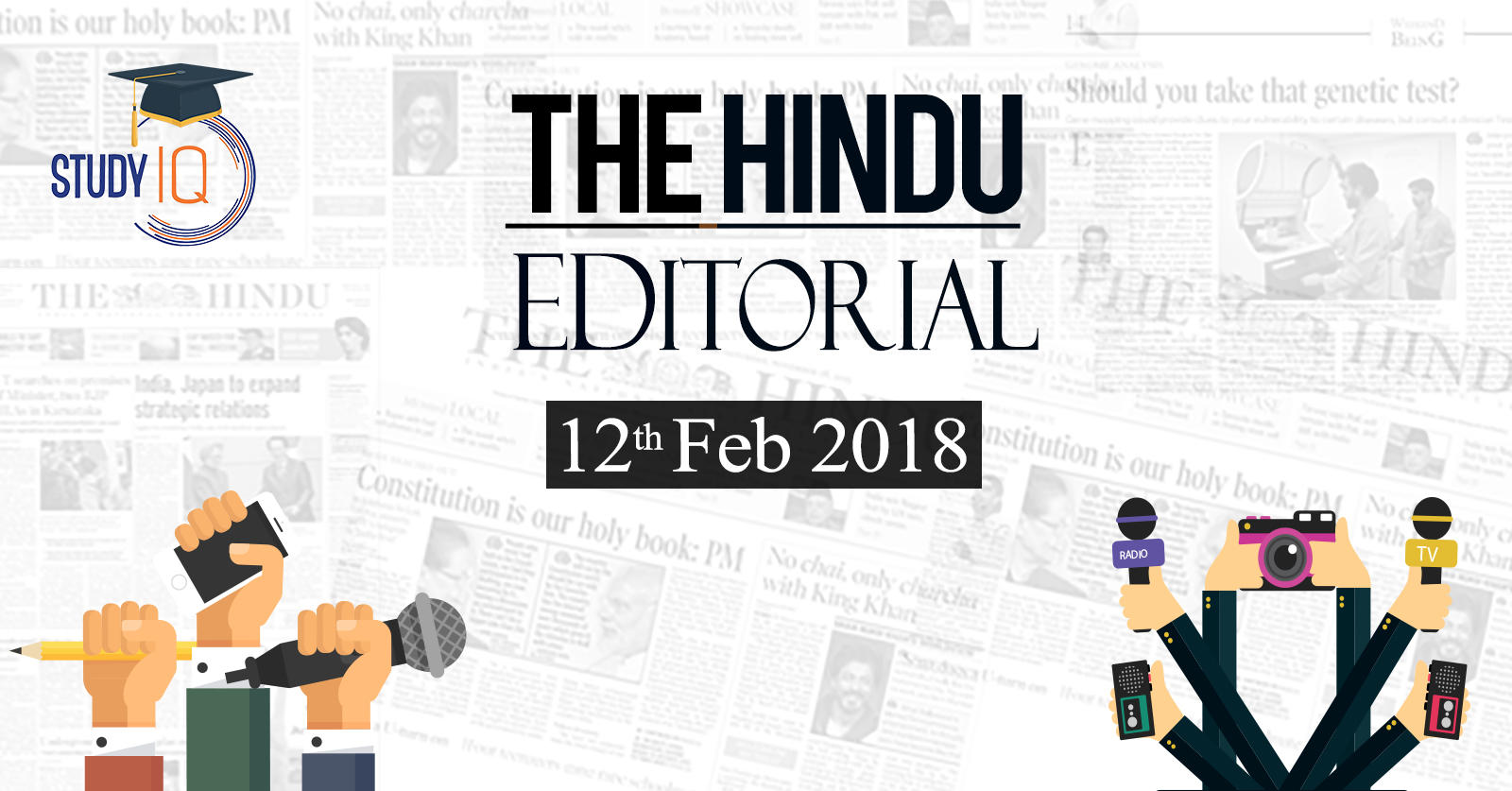Table of Contents
States of health
NITI Aayog Health Index should trigger a wider public debate
States with a record of investment in literacy, nutrition and primary health care have achieved high scores in NITI Aayog‟s •first Health Index.
Kerala, Punjab, and Tamil Nadu are the best-performing large States,
While Uttar Pradesh, Rajasthan, Bihar, Odisha and Madhya Pradesh bring up the rear
Health-care delivery is the responsibility of States;
Centre provides financial and policy support.
Being able to meet the SDGs over coming decade depends crucially on States‟ performance
Health care is not a mainstream political issue in India, and hardly influences electoral result
Index, with all its limitations given uneven data availability
Odisha to bring down its neonatal mortality rate, estimated to be the highest at 35 per thousand live births — worse than Uttar Pradesh
Intra-State inequalities need to be addressed
The twin imperatives are to improve access to facilities and treatments
Both the Centre and the States have the responsibility to scale up their investment on health as a percentage of their budgets, to be more ambitious in interventions.
While the NHPS may be able to address some of the •financial risk associated with ill health,
It will take systematic improvements to preventive and primary care to achieve higher cores in the Index.
As the experience from countries in the West shows, socialization of medicine with a reliance
on taxation to fund basic programmes is the bedrock of a good health system.
If the NITI Aayog Index leads to a mainstreaming of health on these lines, that would be
a positive outcome
Hardly a game changer
Neither the Budget nor the National Health Policy 2017 shows a clear health sector road map
Budget- government has committed itself to “providing coverage up to •5 lakh per family per year for secondary and tertiary care hospitalisation” for 10 crore poor families, with approximately 50 crore people as beneficiaries.
As only •2,000 crore in 2018-19 has been allotted to •- finance this scheme,
Various government functionaries have come up with estimates between 10,000-12000 Cr
as its actual cost.
We wish to take the debate beyond the money required and look at other crucial issues
The target group
National Sample Survey (NSS) 71st round (2014) unit record data
Government‟s target group seems to be the bottom 40% (50 crore) of the population
Rate of hospitalisation and reimbursement(अदायगी) of expenses that insurance companies pay
If the government is serious about providing health care to even the bottom 40% of the population, it should not only increase its current budgetary allocation substantially but also
strengthen the health infrastructure at all levels which includes strong regulatory mechanism
Prelims Focus Facts-News Analysis
 Page-1- Cyberspace shouldn‟t help trigger terror: PM
Page-1- Cyberspace shouldn‟t help trigger terror: PM
Technology should be harnessed for progress, says Modi
Temple work inaugurated


 Page-5- Tribal areas to soon get bike ambulances
Page-5- Tribal areas to soon get bike ambulances
Emergency service has received good response in Mumbai, says Health Minister
 Page-5- Asia‟s largest Christian meet sends out a green message
Page-5- Asia‟s largest Christian meet sends out a green message
„Pampa riverbed shows signs of of degeneration‟
The 123rd Maramon Convention, which is billed as Asia‟s largest week-long annual
Christian meet, began with a call to conserve the river Pampa and the environment
Pampa at Maramon near Kozhencherry (Kerala).































 WhatsApp
WhatsApp